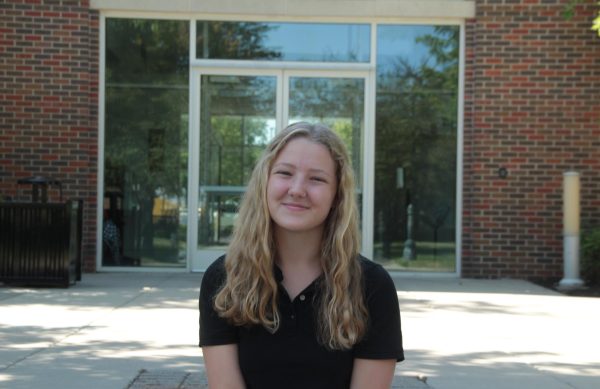As the festivities of Halloween draw to a close on the 31st of October, November dawns bright with other celebrations: Dia de los Muertos and All Saints’ Day. While Halloween can be viewed as a spooky holiday, the days of November first and second are intended to honor the dead.
The tradition of Dia de los Muertos, or the Day of the Dead, is believed to have begun about 3000 years ago, but the present-day celebrations are still an important part of Hispanic culture. During November 1st and 2nd, spirits are believed to come back to visit their living relatives.
To greet them, many cities hold parades that showcase calavera painted faces: skulls drawn with a smile. In contrast with Halloween skulls, calaveras represent the joyful memories of loved ones, and the celebration of both life and death.
The parades are often concurrent with picnics in cemeteries and the cleaning of loved ones’ gravestones.
STA junior Sandra Adams celebrates Dia de los Muertos within her family and parish, but learned about new aspects of it through STA.
“I learned how different places in Mexico celebrate [Dia de los Muertos], because I didn’t know certain places actually do parades and stuff; I didn’t know that was a thing,” Adams said.
To prepare for spirits, families ready multilayered ofrendas for the deceased to encourage the dead to join the celebrations. On top of the ofrenda, photos and personal items rest atop an oilcloth, while the lower portion of the ofrenda contains offerings such as food and marigolds, which guide the spirits through color and scent. The flowers are known as Flor de Muerto, or Flower of the Dead, and are said to symbolize the fragility and beauty of life.
Adams’ family partakes in the creation of the altars, and she often has an ofrenda in her home for the holiday.
“In my house I have a statue of Mary and we put the typical decorations [out], like the yellow flowers with the candles,” Adams said. “We just put everybody we know, like family and friends, and we put their pictures there.”
The holiday is accompanied by other elements, including handmade calavera skulls. Generally made from sugar or clay, the skulls boast bright colors and intricate designs. Papel picado, colored paper banners with cut-out designs, are often created for the occasion as well.
Arguably the most famous calavera is La Calavera Catrina, a female skeleton generally portrayed with a hat. Originally created by José Guadalupe Posada, the skeleton is said to be a modern version of the Aztec goddess of death, Mictecacihuatl, who was believed to preside over funerals and safeguard remains.
While in common use today, La Catrina was originally a political statement. The skeleton’s fancy garb represented the aspirations of some Mexicans to appear wealthy, aristocratic and similar to Europeans. Posada’s satirical portrayal of the calavera conveyed the message that “death is democratic”, and that everyone would be dead regardless of how they appeared. La Catrina was intended as a condemnation of the vanity and greed of the wealthy privileged classes during the Mexican revolution.
Today, the skeleton is featured in many celebrations, but families have personal traditions associated with the holiday as well. For Adams, that includes honoring those who have passed with a meal.
“Something my family does is that we have certain days where we eat a family member or friend’s favorite food for dinner.”
In the Catholic Church, November 1st also honors the dead through the celebration of All Saints’ day. The Holy Day of Obligation, begun by Pope Boniface IV in 609 AD, focuses on those recognized by the Catholic Church in the canon of saints, but is intended to honor all those who have reached Heaven. Similar to Dia de los Muertos, it features the placement of candles or flowers on graves, and is celebrated in different ways across the globe.
Adams celebrates this holiday as well, although she focuses on it more in terms of her parish than familial celebrations.
Whatever the specific holiday, the early days of November are a time for many to honor those who have passed and gain new cultural awareness.
“It gives everybody an opportunity to learn about different cultures. I feel like that’s important because STA is starting to be a lot more inclusive and diversity is now really prominent, so I feel like students would be interested in learning about [the holiday] and maybe even celebrating it.”
This story contains information from the following sources: United Language Group, Dayofthe dead.holiday, National Geographic, Catholic.org, and Whatcom Museum.
When the Saints Come Marching In
In the early days of November, the holidays of Dia de los Muertos and All Saints’ Day are celebrated all over the world.
October 31, 2023
About the Contributor

Chloe Denk, Design Editor
Hi! My name is Chloe Denk and I am a junior at STA. This is my second year on the Dart, and I am thrilled to be one of the design editors! I am excited to be on staff this year and continue to practice my writing, photography, and page design. Outside of classes, I enjoy playing tennis and spending time with my two goldendoodles, LuLu and Tucker. I am a huge bookworm, and my perfect day has to include reading a Jane Austen novel, baking a loaf of chocolate chip banana bread, and binging episodes of Friends. Hope to see you all reading the Dart!


